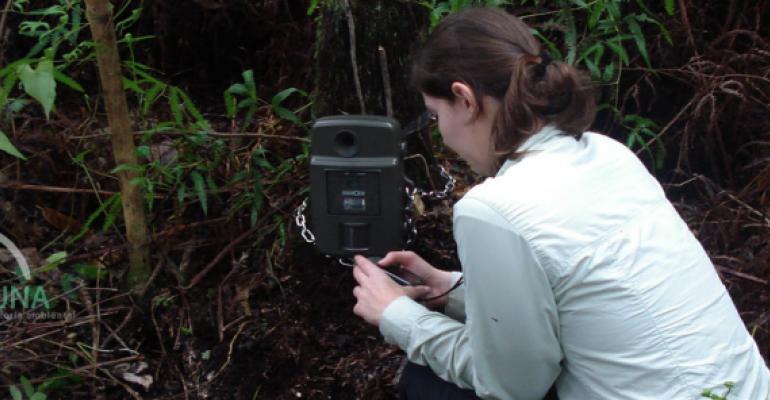Brazilian researchers develop technology designed to reduce collisions between vehicles and wildlife.
Biologist Fernanda Delborgo Abra, founder of ViaFauna, a firm specializing in road mitigation – reducing vehicle-animal collisions – has developed an electronic roadside animal-detection system called Passa-Bicho.
She says the prototype, developed with support from the Sao Paulo Research Foundation, is made up of pairs of motion sensors – transmitter and receiver – attached to short poles similar to those used for Brazilian speed traps and installed 318 ft. (100 m) apart. Each pair of sensors covers a roadkill hotspot.
The transmitter sends the receiver a beam of infrared light invisible to humans. When an animal interrupts the beam, the sensor sends a signal to the pole, which in turn transmits the information by radio, activating an electronic message panel or, in a simpler version, a revolving beacon light on top of an animal-crossing sign.
“Our detection system warns drivers hundreds of meters or even a kilometer or two ahead of an actual animal crossing, giving them time to take precautions,” Abra says in a statement.
“This system is far more effective than a mere sign warning that wildlife may cross the road. When drivers see static warning signs, they never know when animals will actually cross, and so they tend not to pay too much attention.”
ViaFauna’s solar-panel-powered detection system targets medium-to-large-sized animals of more than 6.6 lbs. (3 kg) because of their detectability and impact on road safety. It includes data loggers.
“Currently, researchers only know how many animals are killed on a road,” Abra says. “Our system will show how many cross the road successfully, contributing to studies of animal movement dynamics.”
The next step is to test the prototype at the University of Sao Paulo’s Luiz de Queiroz College of Agriculture and see how it withstands weathering.
ViaFauna is being joined in the testing by Trapa Camera, a firm that specializes in wildlife camera traps and other environmental monitoring devices, and Hoobox Robotic, a robotics and artificial intelligence startup.
“We also need to make several changes to the prototype to make its design appear more market-friendly,” Abra says.





